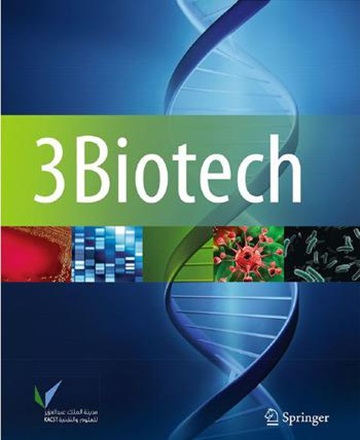肺腺癌中 BTK 表达的生物信息学分析:对免疫浸润、预后生物标志物和靶向治疗的影响。
摘要
近年来,随着越来越多的肺癌患者接受免疫治疗药物的治疗,他们的生存期比以前有所延长。众所周知,BTK(布鲁顿酪氨酸激酶)主要存在于造血系统细胞中。然而,关于 BTK 在肺腺癌(LUAD)患者中的表达及其对免疫微环境的影响的文献却明显缺乏。因此,本研究的主要目的是利用生物信息学在线资源和公开数据库,分析 BTK 在肺腺癌中的表达如何影响其进展及其预后意义。我们从癌症基因组图谱(TCGA)数据库中收集了肺腺癌患者的测序结果和临床记录数据。根据 BKT 的表达水平,TCGA 将肺腺癌患者分为 BTK 高表达组和低表达组。我们研究了 BKT 对肺腺癌患者临床病理学、基因组学和免疫学特征的影响。我们利用两种关键资源分析了肿瘤和正常组织中 BTK mRNA 的表达:我们使用两个关键资源:肿瘤免疫估算资源 2.0(TIMER 2.0)和基因表达谱交互式分析 2(GEPIA 2)分析了肿瘤和正常组织中 BTK mRNA 的表达。我们利用 GEPIA2 分析了患者的预后,并通过单变量和多变量分析验证了结果。此外,我们还通过人类蛋白质图谱(HPA)评估了 BTK 蛋白的表达。我们试图利用在线工具 GEPIA 2 阐明 BTK 在 TCGA 中的临床预后意义。此外,为了明确与 BTK 相关的生物学作用和通路,我们对相关信息进行了基因组富集分析。为了预测TCGA数据库中确诊的肺腺癌患者免疫微环境中各种免疫细胞浸润的比例,我们使用TIMER在线工具进行了分析。利用TIMER和CIBERSORT,探讨了与BTK共表达的基因与相应的肿瘤浸润免疫细胞之间的相关性;最后,利用TCGA数据库,通过R语言分析,分析了TMB组和高、低组的BTK表达与免疫浸润和免疫检查点之间的关系。BTK的表达为患者的预后提供了一些提示。BTK的高表达参与免疫反应调节信号通路、白细胞介导的免疫、白细胞细胞间粘附、移植物排斥和补体。对 GEPIA 2 数据库的分析表明,BTK 与 FGD2、SASH3、NCKAP1L、CD53、ARHGAP30 和 LPXN 基因共同表达。上述基因的表达增加导致 CD8 + T 细胞、记忆 CD4 + T 细胞、B 细胞、巨噬细胞和树突状细胞的比例增加,而 Treg 细胞和 TH2 细胞的比例减少。此外,我们的研究还发现,各种关键免疫检查点(如 PDCD1、CD274、PDCD1LG2、CTLA4、HAVCR2、LAG3、TIGIT 和 SIGLEC15)与 BTK 表达之间存在很强的正相关性。总之,肺腺癌中 BTK 表达的增加与肺癌患者生存期的延长密切相关。此外,被归入 BTK 高表达组的基因在免疫相关通路中表现出显著的富集,这表明它们对肿瘤微环境有潜在的影响。我们研究了 BTK 作为肿瘤抑制基因在预测患者生存期延长方面的潜力。此外,我们还进一步研究了 BTK 通过影响肿瘤免疫浸润的微环境而进一步影响患者免疫治疗反应的可能性,但相关机制仍有待进一步研究。

In recent years, as more and more lung-cancer patients have been treated with immunotherapeutic agents, their survival has been prolonged compared to before. It is well known that BTK (Bruton's tyrosine kinase) is predominantly found in cells of the hematopoietic system. However, there is a distinct lack of literature on BTK expression in lung adenocarcinoma (LUAD) patients and its effect on the immune microenvironment. Consequently, the main goal of this investigation was to analyze how BTK expression in lung adenocarcinoma affects its progression, along with its prognostic significance, through the utilization of bioinformatics online resources and publicly available databases. Data on the sequencing results and clinical records of lung adenocarcinoma patients were gathered from The Cancer Genome Atlas (TCGA) database. Based on the expression level of BKT, TCGA categorized lung adenocarcinoma patients into BTK high-expression and low-expression groups. We investigated the effects of BKT on clinicopathologic, genomic, and immunologic characteristics of lung adenocarcinoma patients. We analyzed BTK mRNA expression in tumors and normal tissues using two key resources: Tumor Immuno Estimation Resource 2.0 (TIMER 2.0) and Gene Expression Profiling Interactive Analysis 2 (GEPIA 2). We analyzed the prognosis of the patients using GEPIA2 and validated the results using univariate and multivariate analyses. In addition, we assessed BTK protein expression by Human Protein Atlas (HPA). We sought to elucidate the clinical prognostic significance of BTK in The TCGA using the online tool GEPIA 2. Furthermore, to clarify the biologic roles and pathways linked to BTK, we conducted a genomic enrichment analysis of the information. To predict the proportion of various immune cell infiltrations in the immune microenvironment of lung adenocarcinoma patients diagnosed in the TCGA database, we performed an analysis using the TIMER online tool. Using TIMER and CIBERSORT, the correlation between genes co-expressed with BTK and the corresponding tumor-infiltrating immune cells was explored; finally, the relationship between BTK expression and immune infiltration and immune checkpoints in the TMB group and the high and low groups was analyzed by R language analysis using the TCGA database. The expression of BTK provides some hints about the prognosis of the patients. The high expression of BTK is involved in immune response regulation signaling pathways, leukocyte-mediated immunity, leukocyte intercellular adhesion, graft rejection, and complement. Analysis of the GEPIA 2 database showed that BTK was co-expressed with the genes FGD2, SASH3, NCKAP1L, CD53, ARHGAP30 and LPXN. Increased expression of the above-mentioned genes resulted in increased proportions of CD8 + T cells, memory CD4 + T cells, B cells, macrophages, and dendritic cells, and decreased proportions of Treg cells and TH2 cells. In addition, our study revealed a strong positive correlation between various key immune checkpoints (e.g., PDCD1, CD274, PDCD1LG2, CTLA4, HAVCR2, LAG3, TIGIT, and SIGLEC15) and BTK expression. In conclusion, increased BTK expression in lung adenocarcinoma is closely associated with prolonged survival of lung-cancer patients. Moreover, the genes classified under the BTK high-expression group exhibit significant enrichment in immune-related pathways, suggesting a potential impact on the tumor microenvironment. We investigated the potential of BTK as a tumor suppressor gene in predicting prolonged patient survival. In addition, we further investigated the possibility that BTK further affects the immunotherapeutic response of patients by influencing the microenvironment of tumor immune infiltration, but the relevant mechanisms remain to be further studied.

 求助内容:
求助内容: 应助结果提醒方式:
应助结果提醒方式:


